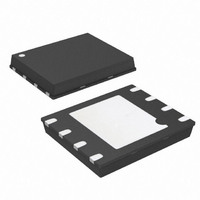AT45DB081D-MU-2.5 Atmel, AT45DB081D-MU-2.5 Datasheet - Page 31

AT45DB081D-MU-2.5
Manufacturer Part Number
AT45DB081D-MU-2.5
Description
IC FLASH 8MBIT 50MHZ 8VDFN
Manufacturer
Atmel
Datasheet
1.AT45DB081D-MU.pdf
(53 pages)
Specifications of AT45DB081D-MU-2.5
Format - Memory
FLASH
Memory Type
DataFLASH
Memory Size
8M (4096 pages x 264 bytes)
Speed
50MHz
Interface
SPI, RapidS
Voltage - Supply
2.5 V ~ 3.6 V
Operating Temperature
-40°C ~ 85°C
Package / Case
8-VFQFN, 8-VFQFPN
Architecture
Sectored
Interface Type
SPI
Supply Voltage (max)
3.6 V
Supply Voltage (min)
2.5 V
Maximum Operating Current
15 mA
Mounting Style
SMD/SMT
Organization
64 KB x 16
Lead Free Status / RoHS Status
Lead free / RoHS Compliant
16. Power-on/Reset State
16.1
17. System Considerations
3596M–DFLASH–5/10
Initial Power-up/Reset Timing Restrictions
When power is first applied to the device, or when recovering from a reset condition, the device
will default to Mode 3. In addition, the output pin (SO) will be in a high impedance state, and a
high-to-low transition on the CS pin will be required to start a valid instruction. The mode (Mode
3 or Mode 0) will be automatically selected on every falling edge of CS by sampling the inactive
clock state.
At power up, the device must not be selected until the supply voltage reaches the V
further delay of t
reset mode until the V
operations are disabled and the device does not respond to any commands. After power up is
applied and the V
before the device can be selected in order to perform a read operation.
Similarly, the t
value (V
power-up, the device will default in Standby mode.
Table 16-1.
The Atmel
select CS pins. These signals must rise and fall monotonically and be free from noise. Excessive
noise or ringing on these pins can be misinterpreted as multiple edges and cause improper
operation of the device. The PC board traces must be kept to a minimum distance or appropri-
ately terminated to ensure proper operation. If necessary, decoupling capacitors can be added
on these pins to provide filtering against noise glitches.
As system complexity continues to increase, voltage regulation is becoming more important. A
key element of any voltage regulation scheme is its current sourcing capability. Like all Flash
memories, the peak current for Atmel DataFlash
operation. The regulator needs to supply this peak current requirement. An under specified reg-
ulator can cause current starvation. Besides increasing system noise, current starvation during
programming or erase can lead to improper operation and possible data corruption.
Symbol
t
t
V
VCSL
PUW
POR
POR
®
) before the device can perform a write (Program or Erase) operation. After initial
Parameter
V
Power-Up Device Delay before Write Allowed
Power-ON Reset Voltage
RapidS
CC
Initial Power-up/Reset Timing Restrictions
PUW
VCSL
(min.) to Chip Select low
CC
delay is required after the V
™
. During power-up, the internal Power-on Reset circuitry keeps the device in
is at the minimum operating voltage V
CC
serial interface is controlled by the clock SCK, serial input SI and chip
rises above the Power-on Reset threshold value (V
CC
®
rises above the Power-on Reset threshold
occur during the programming and erase
Atmel AT45DB081D
Min
1.5
CC
70
(min.), the t
Typ
VCSL
POR
Max
delay is required
). At this time, all
2.5
20
CC
(min.) and
Units
ms
µs
V
31

















